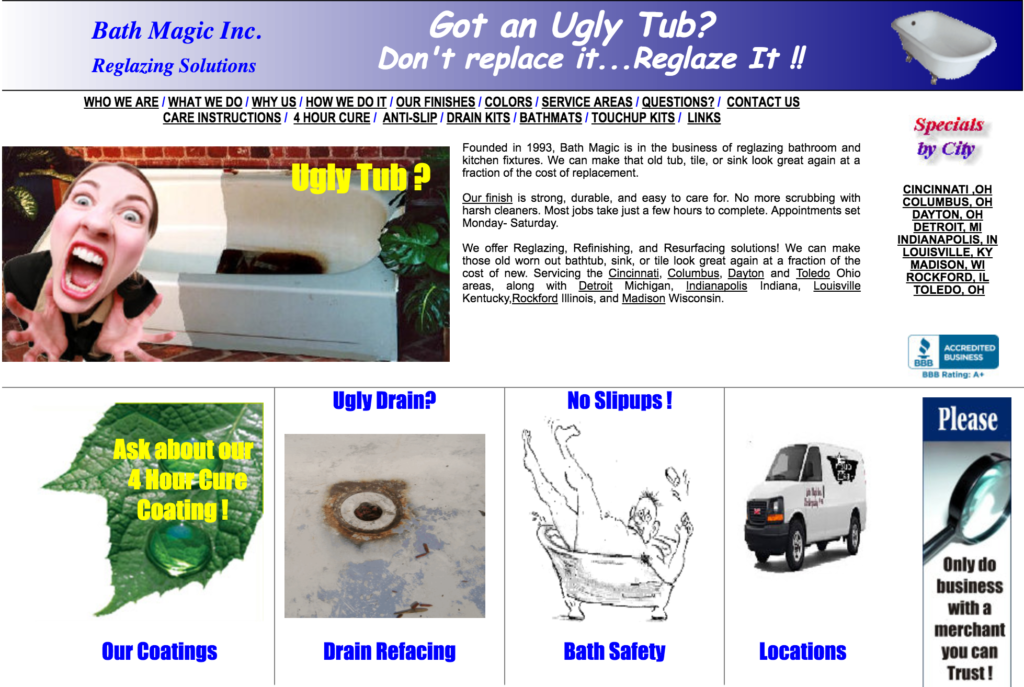How to Spot a Bad Web Designer: 5 Warning Signs

Not sure how to spot a bad web designer? If you are a non-profit manager or small business owner, you may feel that you’re dependent on the person you just hired to build your website or redesign your old one. You also might feel like it’s difficult to tell the difference between a good web designer and a bad one.
Below are 5 warning signs to look for before you sign that contract.
Warning Sign #1: Offers to Work Without a Contract
The first way to spot a bad web designer is that they frequently “offer” to work without a contract. This may seem like a benefit to you, the customer. No red tape. No worries about them overcharging you. Room to haggle if you see the need.
The problem is: working with a web designer without a contract also means you have no protection should the project go south. Web design contracts help protect not only the designer, but also the consumer. Good contracts stipulate things like hourly rates, the final price of the website, maintenance fees, and how many revisions you get as part of the initial contract.
Hiring someone to build a website for you with no contract typically means you’ll have no guarantee that they’ll do a good job, or even finish the job.
Warning Sign #2: Has No Portfolio
The next way to spot a bad web designer is that they usually have no portfolio. The only reason to not have a portfolio as a web designer is if this is their first web design project. In that case, it’s up to you whether you want to take the risk on someone who is completely untested.
Many bad web designers will refuse to show you a portfolio, however, because the websites they have built in the past are terrible. Web design is part science and part art. You have to be technologically savvy to be a web designer, but you also need to have an eye for design. If your web designer is missing either of these traits, they won’t be able to build a website for you that is both technologically sound and aesthetically pleasing.
Warning Sign #3: Poor Communication Skills
You can also spot a bad web designer by their inability to communicate with their clients. You’re hiring a web designer because you don’t know how to design an effective website yourself. Good web designers recognize that and communicate with their clients without using jargon. If you don’t fully understand what your web designer is saying, how can you be sure that your website will reflect your wishes?
Warning Sign #4: Doesn’t Show You Mockups and Prototypes
This goes along with being a good communicator, but good web designers should always show you three things before your website is launched:
- A static mockup of your website
- A working prototype of your website
- A finalized prototype that looks exactly like the final product that will be launched
These three things are web design best practices, because they allow the client to give feedback at three very important stages of the design: beginning, middle, and end. At each step of the process, you should be able to communicate any concerns you have to your web designer so that by the time your site is ready to launch, it looks exactly like what you expect. There’s nothing worse than opening your new website once it’s launched and realizing that it’s not what you expected.
Warning Sign #5: Charges A Lot More Than the Competition, Or a Lot Less
You should also be wary of web designers who charge considerably more than their competitors, or considerably less. Web design is not a highly-regulated industry, so designers can essentially charge whatever they want for their services. Good web designers keep an eye on what their competitors are charging and try to at least match or beat their competition.
There are also different tiers of web designers. There are web design companies like us that cater mostly to small businesses and non-profits, for example. Then there are companies that go after medium-sized organizations or large national or international brands. You’re simply not going to pay the same amount for a 5-page WordPress website for your small business or non-profit as a retail store representing and entire state or region will pay for their 500+ page e-commerce site. If your web designer is charging considerably more than what their competitors charge for the same services, you should consider shopping around.
You also don’t want to go to the other end of the spectrum, however, and hire a web designer than charges hardly anything. Occasionally, we will have folks contact us who say they have someone who will design a website for them for $250 or some other ridiculously low number. Unless this designer is working from a country where the US dollar is extremely strong, you should be suspicious. Of course, working with a designer from another country also brings with it additional complications.
Most of the time, however, if you pay $250 for a website, you’ll get what you pay for: a bad website.
What To Do If You’ve Hired a Bad Web Designer
If you’ve hired a bad web designer, the best thing you can do is find another designer, or design company, who you trust. Go to your friends, acquaintances, and colleagues to see if they know anyone you can talk to about your website. Tell your current web designer that you want them to stop work immediately while you re-evaluate the direction of the project. Then get your new design buddy to look over the website they’re building.
If the new web designer agrees that your website is terrible, get out of the project any way you can. Any decent web designer has a contingency for a project that goes unfinished. Typically, they charge you for any work done to that point and then call it quits. You’ll definitely lose some money this way, but it’s way better than having to live with the humiliation of a terrible website for months or years to come.



4 Myths About Industry-Specific Digital Marketing Solutions - Content Garden
September 5, 2018 @ 9:04 am
[…] How to Spot a Bad Web Designer: 5 Warning Signs […]
How to Give Good Feedback to Your Web Designer - Content Garden
May 6, 2020 @ 9:01 am
[…] How to Spot a Bad Web Designer: 5 Warning Signs […]